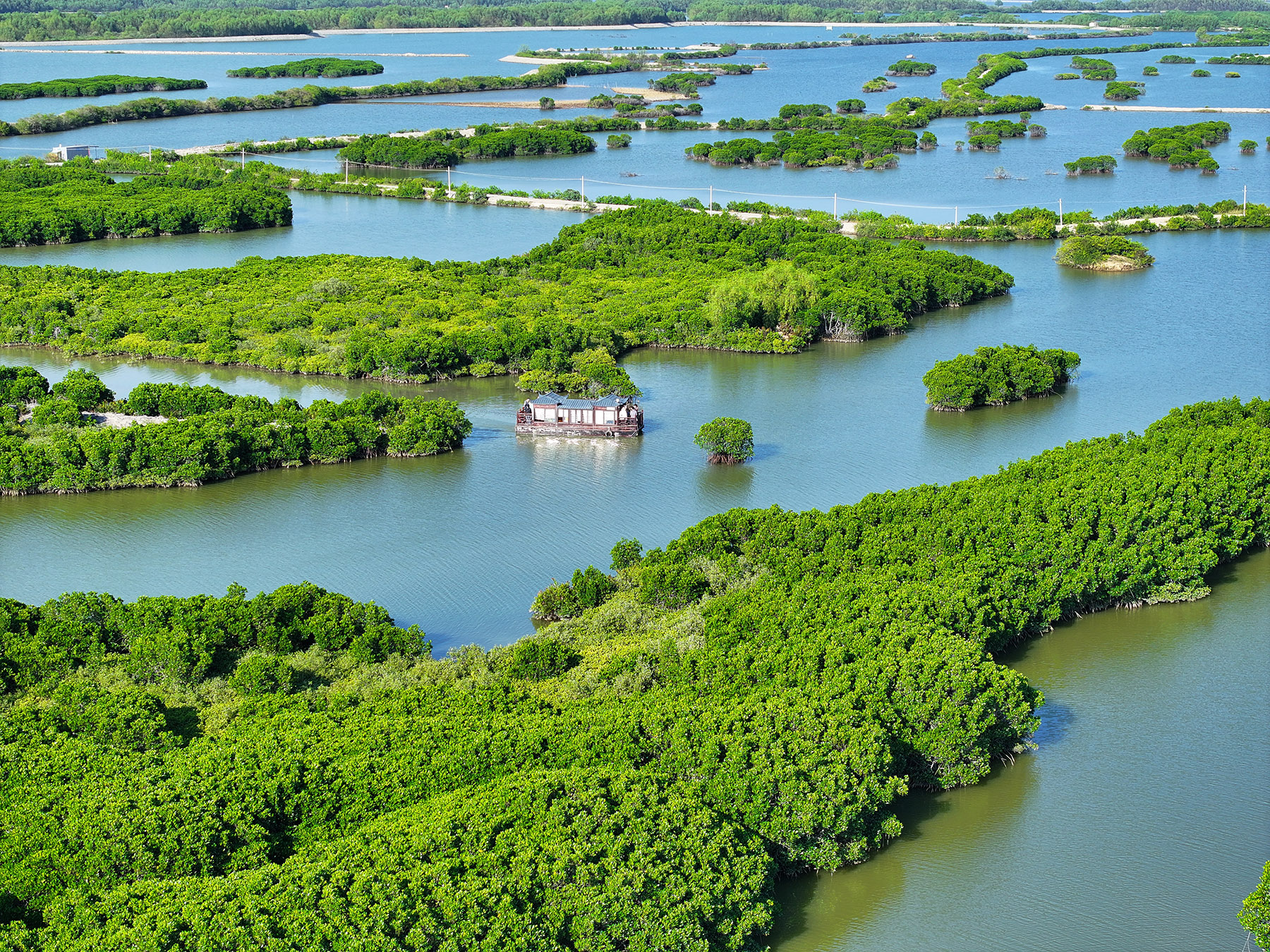
Within a national nature reserve in Zhanjiang, Guangdong province, extensive mangrove forests grace the clear sea surface of Jinniu Island, with fish and shrimp living amid the songs of egrets, demonstrating the harmonious coexistence of humans and nature.
The vibrant mangrove forests impressed the members of an ecological field trip who visited on Friday. The group comprised reporters, photographers and international students from Guangdong. Guided by the Guangdong Provincial Government Information Office, the event was jointly organized by Nanfang Media Group, the information office of Zhanjiang and the province's news photographer association.
The protection and restoration of mangroves in Zhanjiang epitomizes Guangdong's ecological endeavors. Preserving mangroves and other wetlands stands as a pivotal aspect of the province's ecological initiatives. In the provincial government's work report, the establishment of several demonstration areas of mangroves spanning at least 667 hectares was made a key focus.
READ MORE: White dolphins among the animals protected by reserves and policies
Guangdong boasts the largest expanse of mangroves among Chinese provinces, stretching from Raoping county in Chaozhou to Xuwen county in Zhanjiang. It encompasses 39 counties, districts and the province's 14 prefecture-level cities along the coast.
Currently, the province hosts 10,600 hectares of mangroves, accounting for 39.3 percent of the country's total.
Within Guangdong, three internationally significant wetlands and two provincially important wetlands have been designated with mangrove conservation. The province is home to a diverse array of mangrove plant species, comprising 27 species from 18 families and 24 genera.
According to a plan for mangrove forest demonstration areas in Guangdong, issued in early 2023, the province will establish four 667-hectare-level mangrove forest demonstration areas by 2025 in the coastal areas in Taishan in Jiangmen, Leizhou and Xuwen in Zhanjiang, and in Kaozhouyang in Huizhou. The total newly created and restored mangrove area is estimated to exceed 2,933 hectares.
By the end of 2023, approximately 2,656 hectares of new mangroves were established across the province and around 2,010 hectares of existing mangroves were restored. Seven islands in the province have been selected as national-level "Harmonious and Beautiful Islands", accounting for one-fifth of the total number on the list.
Leveraging its mangrove forests, the province is in pursuit of sustainable growth.
As a typical coastal blue carbon ecosystem, mangroves feature a significantly higher carbon sequestration capacity per unit area compared to other forest ecosystems. These "blue carbon stars" have a high carbon sink capacity and longer carbon storage periods.
Since China proposed dual carbon goals in 2020, Guangdong has been at the forefront of exploring the development of and trade in blue carbon-sink products. These are embodied by mangroves, pioneering innovative trading models and establishing a new path to realize the value of mangrove carbon sinks.
In 2021, the province achieved a milestone by completing the first blue carbon sink program in the country — the Zhanjiang Mangrove Afforestation Project in Guangdong. It stands as China's inaugural mangrove carbon sink initiative. It is compliant with both the Verified Carbon Standard and the Climate, Community and Biodiversity Standards certifications.
Building on this success, Shenzhen has initiated the country's first mangrove conservation carbon sink program, expanding the horizons of mangrove blue carbon sink products.
In May 2023, Shenzhen officially launched the methodology for carbon sequestration in mangrove conservation programs, highlighting the ecological value generated by prominent mangrove conservation activities and filling the methodological gap in domestic carbon sink programs related to the preservation of natural ecosystems.
ALSO READ: Guangdong helps to connect Bay Area rules
At the end of July, the 10-year mangrove carbon sink development rights for a mangrove afforestation program in Huidong county, Huizhou, were traded. Guangdong Energy Group Energy Conservation and Carbon Reduction Company won the bid with more than 4 million yuan ($560,144).
This transaction set a record for the largest total volume and highest amount in domestic mangrove carbon sink trading to date, pioneering the trading of such development rights nationwide.
The development and utilization of mangroves remain focal points for local governments in the areas where Guangdong's mangroves are situated.
In Shiqiao village, nestled in the mangroves of Jinniu Island in Zhanjiang, residents have turned their attention to aquaculture and cultural tourism. Collaborating with the Zhanjiang Bay Laboratory, the village has adopted scientific approaches to cultivate aquatic products such as oysters, clams, cockles, fish, shrimps and crabs.


